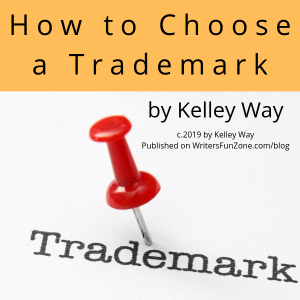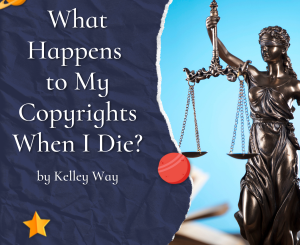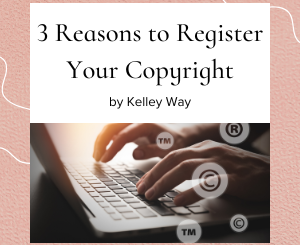How to Choose a Trademark by Kelley Way
 Let’s welcome back monthly columnist Kelley Way as she shares with us “How to Choose a Trademark.” Enjoy!
Let’s welcome back monthly columnist Kelley Way as she shares with us “How to Choose a Trademark.” Enjoy!
***
Choosing a trademark to represent your business can be tricky — especially if you want to call your business something other than your own name.
Here are a few pointers to get you started:
Choose A Trademark That is As Original and Creative As Possible
- More creativity is better. Try to choose a name (or logo, or slogan) that is as original and creative as possible. There are several reasons for this.
- First, it will make you stand out more in the marketplace, which is, after all, the whole point.
- Second, the more creative your trademark is, the less likely someone else has already thought of it. No one wants to sink a boatload of time and money into their brand, only to get a cease and desist letter accusing them of trademark infringement.
- And lastly, the courts give more protection to creative marks than non-creative marks. Non-creative marks (“Novato Printing Press,” “Way Printing,” etc.) get little to no protection. The marks that get the most protection are marks that are “fanciful” (i.e. completely made-up words, like “Kodak,” “Xerox,” or “Microsoft”) or “arbitrary” (i.e. the word exists, but has no connection to the product, like “Apple” for computers, “Shell” for gasoline, or “Galaxy” for phones.)
Search The Trademark Database
- Make sure the name isn’t already taken. As I said before, it does you no good to choose a trademark, then have to start over with a new mark after getting a cease and desist letter. Do the research first and make sure the mark you want to use isn’t already taken. Google is a great place to start; you can also search the trademark database at the US Patent and Trademark Office.
Avoid a Trademark Infringement Lawsuit
- Check for names that are similar to your mark. It sounds like I’m repeating myself, but I’m not. In a trademark infringement lawsuit, the standard the courts use is “Are the two marks similar enough that buyers will be confused as to the origin of the product?” The key word in the sentence is “similar.” It doesn’t have to be identical to be infringing. If a significant number of consumers look at your mark and wonder if the other person/company is the owner, then the courts are likely to find trademark infringement. To avoid this, when you search for other people using your mark, make sure to look for common variations — alternate spellings, variations in phrasing, using part of your mark but not all of it, that sort of thing.
Doing all these searches will take a bit of time, but if you’re thorough about it, the odds of a trademark infringement lawsuit are much lower. In addition, if you actually keep records of all these searches, they can be used down the road to show good faith, which is a factor the courts take very seriously.
Of course, if you don’t want to do all this work yourself, there are companies who specialize in trademark clearance searches. You could also ask a trademark lawyer, who will typically include this search as part of their trademark registration process.
For more information, or to get help with your trademark, please reach out to me at kaway@kawaylaw.com.
***
ABOUT THE AUTHOR
Kelley Way was born and raised in Walnut Creek, California. She graduated from UC Davis with a B.A. in English, followed by a Juris Doctorate. Kelley is a member of the California Bar, and an aspiring writer of young adult fantasy novels. More information at kawaylaw.com.







